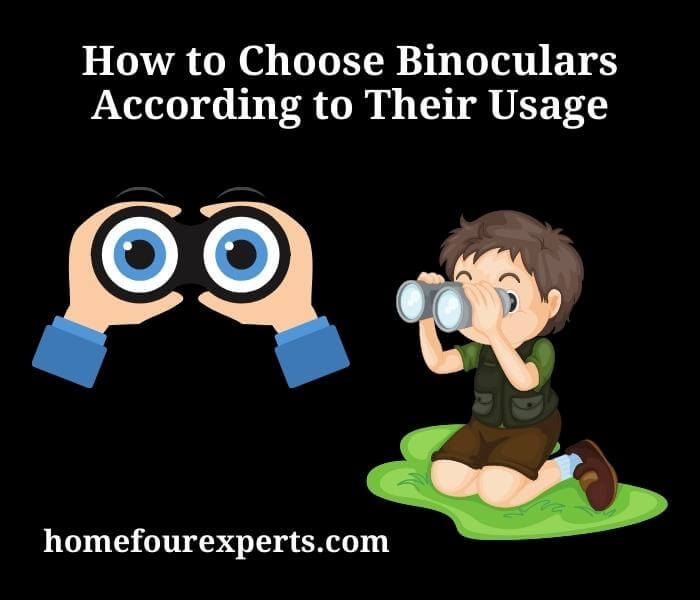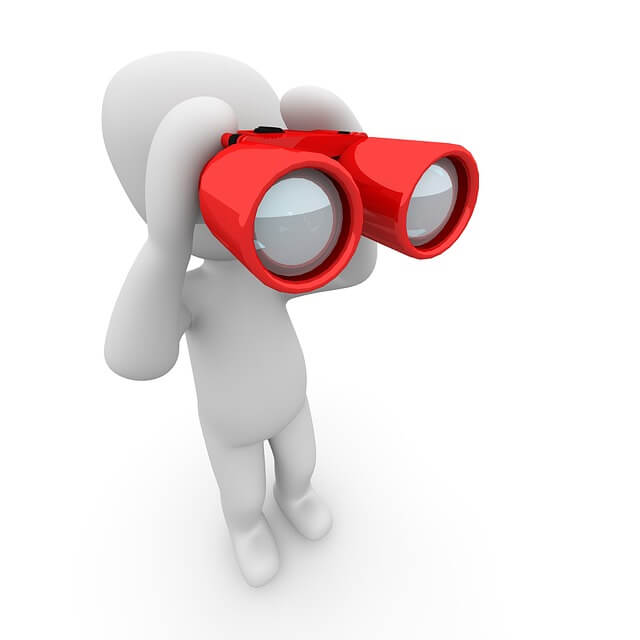From hiking to bird watching to sailing, astronomy and even opera, many hobbies can take advantage of a good pair of binoculars. Mechanical strength and optical quality are two important criteria to consider when getting equipped.

You will also need to consider the location and time you will mostly be using the binoculars. You will use a binocular that can gather enough light if you intend to enjoy good quality images at dawn, dusk, or in places with poor light condition, like the woods.
Humid areas require durable waterproof and fog-proof binoculars. There is just so much to give thoughts to. Let’s navigate through the other points.
Magnification And Objective Lens Diameter
Each pair of binoculars is characterized by two numbers, in form 8×32, 10×42, and so on. The first indicates the magnification. With a pair 8×32 – the best-selling model – the subject appears 8 times bigger than without binoculars.
Magnifications less than 5x are mostly irrelevant outdoors, but magnifications above 10x are very sensitive to tremors and require the support of a tripod or an image stabilizer. The second number is the diameter of the lens expressed in millimeters.
The wider it is, the more light the binocular captures, and so the sharper the image. It is tempting to choose a wide lens, but it makes the binoculars more cumbersome. During the day, a diameter of 32 or 42 mm is sufficient.
These two data make it possible to calculate the diameter of the exit pupil, which is the result of the diameter divided by the magnification of the objective (for example, 32/8 = 4 mm). Preferably, the diameter of the exit pupil should be greater than that of the pupil of the eye.
Equipment Adapted to the Needs
The first question to ask when choosing binoculars is their main use. For hikers or travelers, versatile binoculars (8×32 or 10×42) are recommended. They must be light, waterproof, and robust: rubberized cladding makes sense because it increases impact resistance. For more precision, ornithologists will prefer a magnification of 10x to 12x.
At this level, stability is paramount and a tripod is needed. Conversely, at the theater or in a stadium, compact binoculars (8×24) will be recommended, for reasons of practicality. Buying a pair of binoculars is an investment. Cheaper models are also available for children.

For Eyeglass Wearers
Glass wearers can use the hunting binoculars without needing to remove them: in this case, choose a model with retractable eyecups.
It is also possible to do without glasses by adjusting the binoculars so that they correct your visual defect. To do this, close the right eye and use the center focus wheel to get the image of an object in view.
Next, use the diopter adjustment (usually on the right eyepiece) to compensate for the difference in visual quality between your two eyes. Binoculars with autofocus can be challenging to use for eyeglass wearers as they do not correct vision defects.
Best Type of Binoculars for the Planned Activity
The type of binoculars that is best for a planned activity depends on the specific activity and the individual’s needs and preferences. Here are a few examples:
- For birdwatching, a pair of binoculars with a magnification of 8-10 and an objective lens diameter of 30-40mm is recommended.
- For nature observation, a magnification of 8-12 and an objective lens diameter of 30-50mm would be suitable.
- For sports or concert events, a magnification of 8-12 and an objective lens diameter of 30-40mm would work well.
- For hunting or surveillance, a magnification of 10-15 and an objective lens diameter of 40-50mm is recommended.
It’s also important to consider factors such as weight, durability, and ease of use when selecting a pair of binoculars. Additionally, consider if you will be using it in low-light situations or need image stabilization.
Conclusion
When choosing binoculars, consider the intended usage and environment. For outdoor activities such as hiking, bird watching, or hunting, a pair with a magnification of 8-10 and an objective lens of 30-40mm would be suitable. For astronomical observations, a higher magnification of at least 10-12 and an objective lens of 50-70mm would be necessary.
Consider factors such as weight, durability, and ease of use. It’s also important to choose binoculars with good-quality optics and image stabilization features if you are going to use them for a long period of time.
You Might Also Like:
- 5 Best Hiking Poles – Featuring & Compared Top Picks
- 12 Must-Have Winter Camping Essentials You Need to Pack
- Why Do People Use Hiking Poles
About This Writer

Guys, I am Camila Avery and I love to help my mom to do indoor & outdoor activities. As a lady, I have passed my time on gardening, home improvement, and personal or self-care. I have acquired some degrees in outdoor recreation, beauty, and hair care. It is not easy to work with top-level professional beauty experts. But, I got that opportunity and experimented with different hair extensions, hair colors, and cuts.